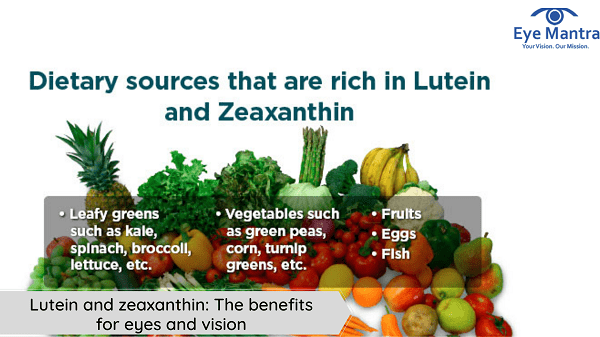ZEAXANTHIN and LUTEIN are categorized under the class of carotenoids, xanthophylls. Xanthophylls and act as natural sunscreens in plants, guarding them against the damaging effects of excessive light-derived energy (life-extension).
Contents
Benefits
- Both protect your body’s proteins, fats, and DNA from stressors and can even help recycle glutathione, another key antioxidant in your body.
- Additionally, their antioxidant properties may reduce the effects of “bad” LDL cholesterol, thus decreasing plaque build-up in your arteries and reducing your risk of heart disease.
- Both also work to protect your eyes from free radical damage.
- Your eyes are exposed to both oxygen and light, which in turn promote the production of harmful oxygen-free radicals. Lutein and zeaxanthin cancel out these free radicals, so they’re no longer able to damage your eye cells.
- These carotenoids seem to work better together and can combat free radicals more effectively when combined, even at the same concentration.
- Both are the only dietary carotenoids that accumulate in the retina, particularly the macula region, which is located at the back of your eye.
- Because they’re found in concentrated amounts in the macula, they’re known as macular pigments.
- The macula is essential for vision. Lutein and zeaxanthin work as important antioxidants in this area by protecting your eyes from harmful free radicals.
- Both also act as a natural sunblock by absorbing excess light energy.
Below are some conditions with which lutein and zeaxanthin may help:
- Age-macular degeneration (AMD): Consumption of lutein and zeaxanthin may protect against AMD progression to blindness.
- Cataracts: Cataracts are cloudy patches at the front of your eye. Eating foods rich in lutein and zeaxanthin may slow their formation.
- Diabetic retinopathy: In animal diabetes studies, when supplemented with lutein and zeaxanthin have been shown to reduce oxidative stress markers that damage the eyes.
- Eye detachment: Rats with eye detachments who were given lutein injections had 54% less cell death than those injected with corn oil.
- Uveitis: This is an inflammatory condition in the middle layer of the eye. Lutein and zeaxanthin may help reduce the inflammatory process involved.
The research to support lutein and zeaxanthin for eye health is promising, but not all studies show benefits. For example, some studies found no link between lutein and zeaxanthin intake and the risk of early-onset age-related macular degeneration.
While there are many factors at play, having enough lutein and zeaxanthin is still crucial to your overall eye health.
Only in recent years have the beneficial effects of lutein and zeaxanthin on skin been discovered.
Their antioxidant effects allow them to protect your skin from the sun’s damaging ultraviolet (UV) rays.
A two-week animal study showed that rats who received 0.4% lutein- and zeaxanthin-enriched diets had less UVB-induced skin inflammation than those who received only 0.04% of these carotenoids.
Another study in 46 people with mild-to-moderate dry skin found that those who received 10 mg of lutein and 2 mg of zeaxanthin had significantly improved skin tone, compared to the control group (26Trusted Source).
Furthermore, lutein and zeaxanthin may protect your skin cells from premature aging and UVB-induced tumors.
Dosage
There’s currently no recommended dietary intake for both
What’s more, the amount of lutein and zeaxanthin your body requires may depend on the amount of stress it endures. For example, smokers may need more lutein and zeaxanthin, as they tend to have lower levels of carotenoids, compared to non-smokers.
In fact, 6–20 mg of dietary lutein per day are associated with a reduced risk of eye conditions.
Research from the Age-Related Eye Disease Study 2 (AREDS2) found that 10 mg of lutein and 2 mg of zeaxanthin caused a significant reduction in the progression of age-related macular degeneration to an advanced state.
Likewise, supplementing with 10 mg of lutein and 2 mg of zeaxanthin can improve overall skin tone.
Lutein and zeaxanthin: safety profile
Research estimates that 0.45 mg per pound (1 mg per kg) of body weight of lutein and 0.34 mg per pound (0.75 mg per kg) of body weight of zeaxanthin daily are safe. A study in rats found no adverse effects for lutein or zeaxanthin for daily doses of up to 1,814 mg per pound (4,000 mg/kg) of body weight, which was the highest dose tested.
Food Sources
Although both are responsible for the bright colors of many fruits and vegetables, they’re actually found in greater amounts in leafy green vegetables.
Interestingly, the chlorophyll in dark-green vegetable masks both pigments, so the vegetables appear green in color.
Key sources of these carotenoids include kale, parsley, spinach, broccoli, and peas. Kale is one of the best sources of lutein with 48–115 mcg per gram of kale. Orange juice, honeydew melon, kiwis, red peppers, squash, and grapes are also good sources of lutein and zeaxanthin, and you can find a decent amount of both in durum wheat and corn as well.
To know more about it, you can easily visit our website Eyemantra. If you are looking for other services like cataract surgery, Retina surgery or Ocuploplasty you can simply ring at +91-9711115191. Even you can simply mail us on [email protected].



